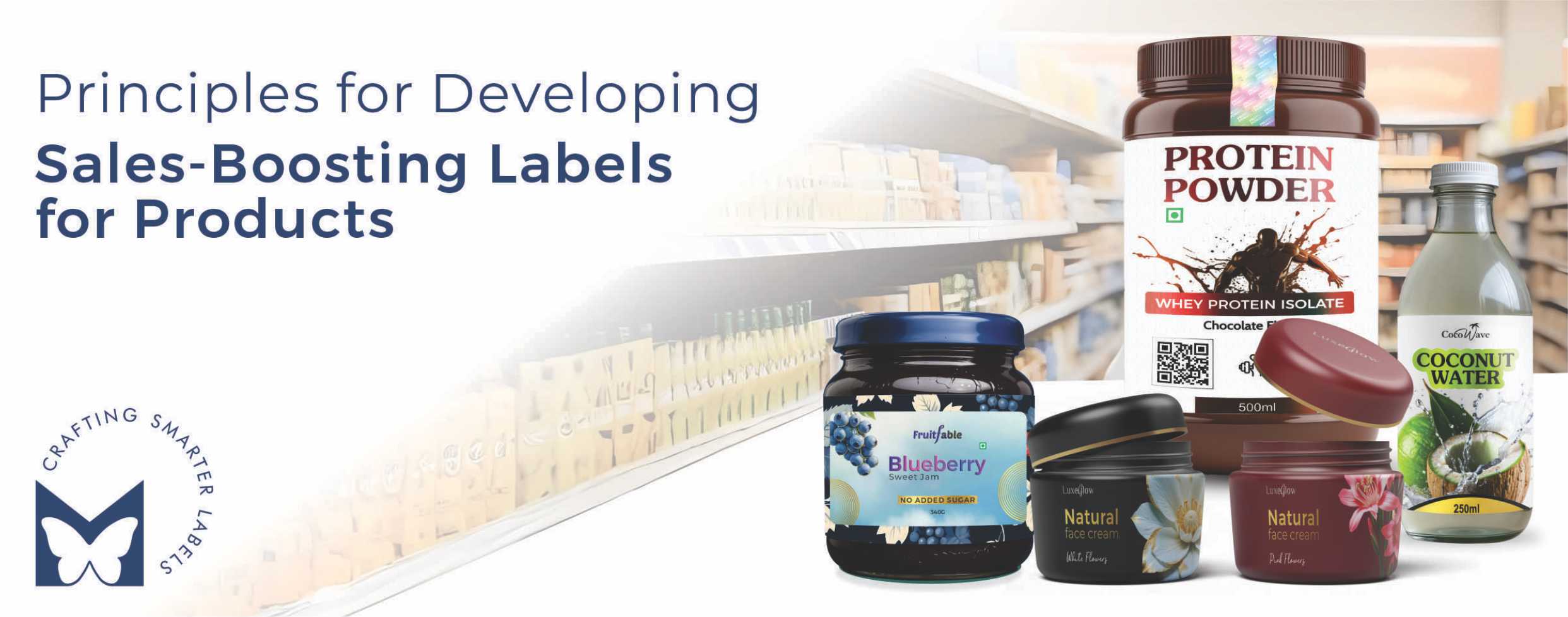 In a competitive marketplace, where countless products vie for consumer attention, the label on your product is not just a mere identifier but a powerful tool for boosting sales. For brand owners, project managers, and marketing heads across industries such as FMCG, beverages, neutraceuticals, pharmaceuticals, automotive, wine and spirits, cosmetics, and personal care, developing sales-boosting labels is crucial. This blog explores the principles for crafting effective printed labels that not only capture attention but also enhance brand value and drive consumer purchasing decisions.
In a competitive marketplace, where countless products vie for consumer attention, the label on your product is not just a mere identifier but a powerful tool for boosting sales. For brand owners, project managers, and marketing heads across industries such as FMCG, beverages, neutraceuticals, pharmaceuticals, automotive, wine and spirits, cosmetics, and personal care, developing sales-boosting labels is crucial. This blog explores the principles for crafting effective printed labels that not only capture attention but also enhance brand value and drive consumer purchasing decisions.
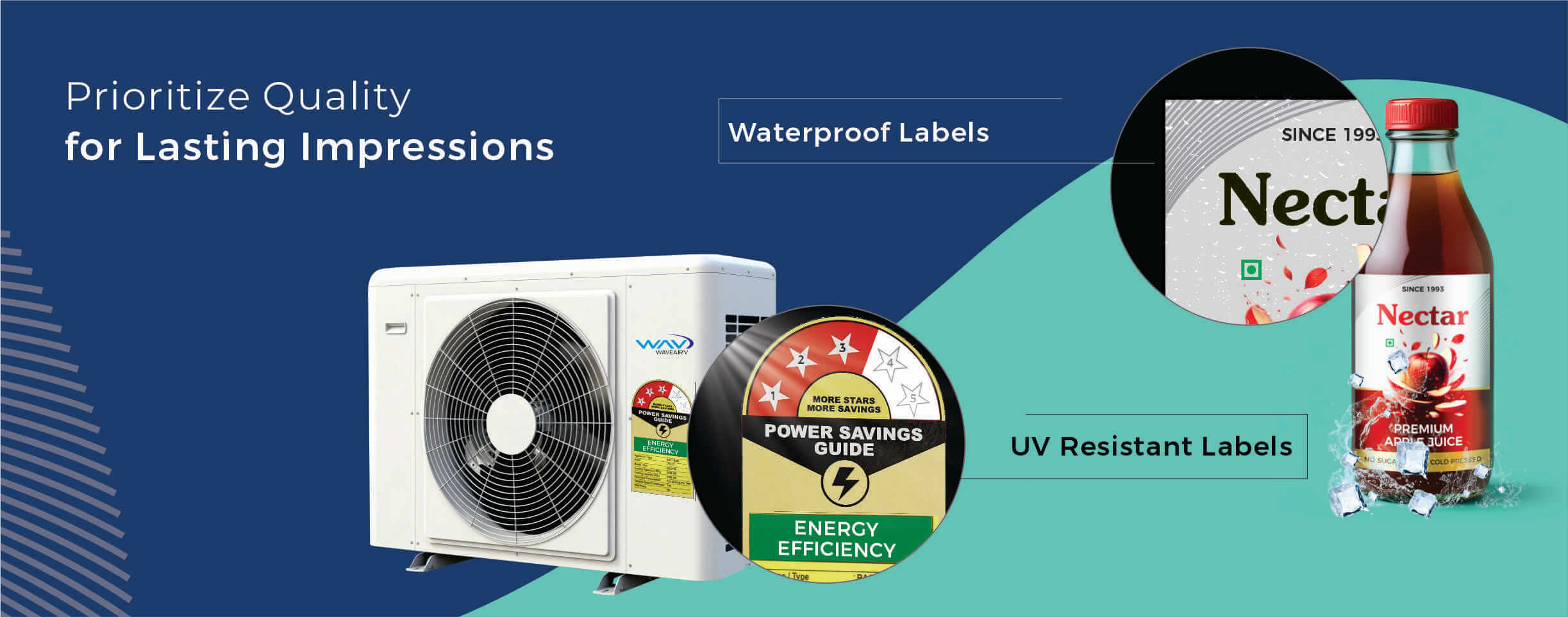 1. Prioritize Quality for Lasting Impressions
1. Prioritize Quality for Lasting Impressions
The quality of a printed label speaks volumes about your product. High-quality labels convey professionalism and trustworthiness. Whether you’re using paper, vinyl, or synthetic substrates, the durability and print finish of your label should reflect the premium nature of your product. For instance, a luxurious wine bottle will benefit from a high-gloss, textured label that exudes sophistication, while a durable automotive part might require a more rugged, weather-resistant label.
Key Considerations:
-
Print Technology: Opt for high-resolution printing technologies such as digital or flexographic printing to ensure clarity and sharpness.
-
Substrate Selection: Choose substrates that align with the product’s use environment. For instance, waterproof labels are essential for beverages, while UV-resistant labels work well for outdoor products.
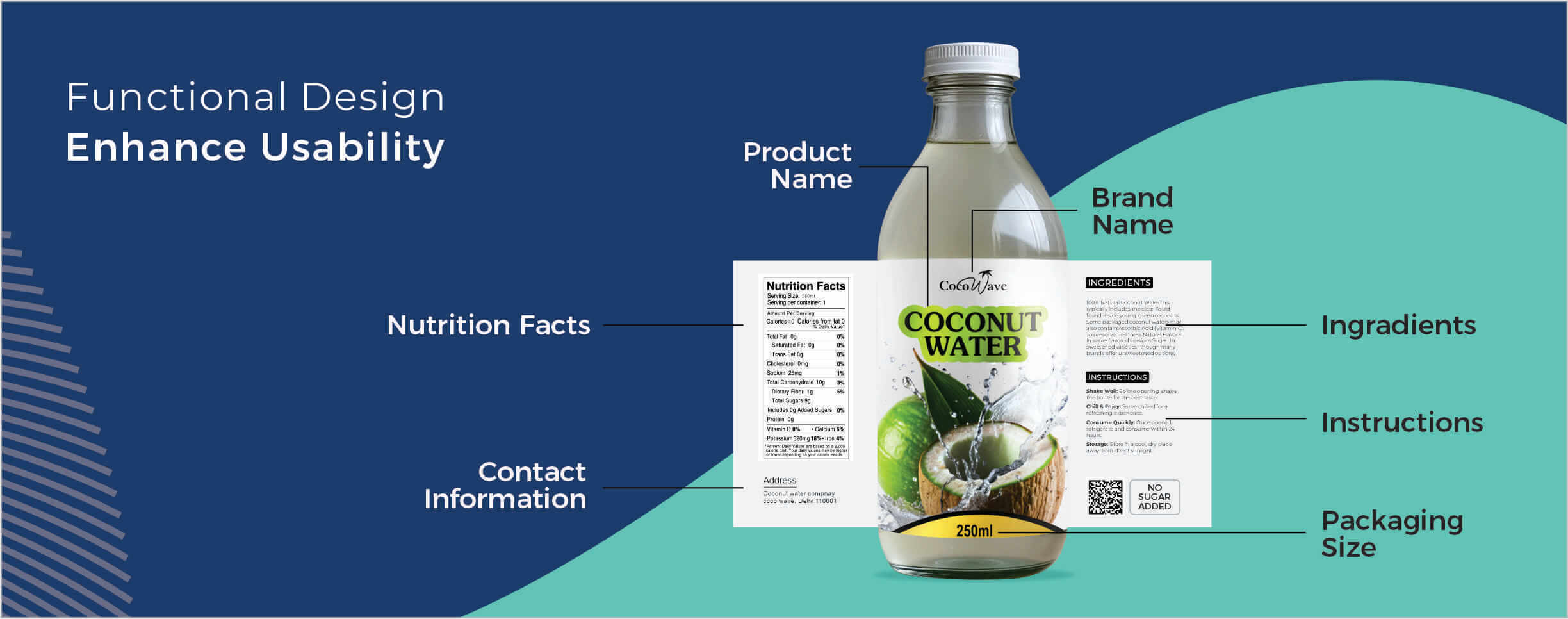 2. Functional Design: Enhance Usability
2. Functional Design: Enhance Usability
A well-designed label is not only visually appealing but also functional. It should provide clear information and instructions that aid consumer decision-making. Functional labels incorporate essential elements like product details, usage instructions, and regulatory information, ensuring that consumers have all the information they need at a glance.
Key Considerations:
-
Legibility: Use fonts and sizes that are easy to read. Avoid cluttered designs that can overwhelm or confuse the consumer.
-
Regulatory Compliance: Ensure your labels meet industry-specific regulations and standards, including ingredient lists, nutritional information, and safety warnings.
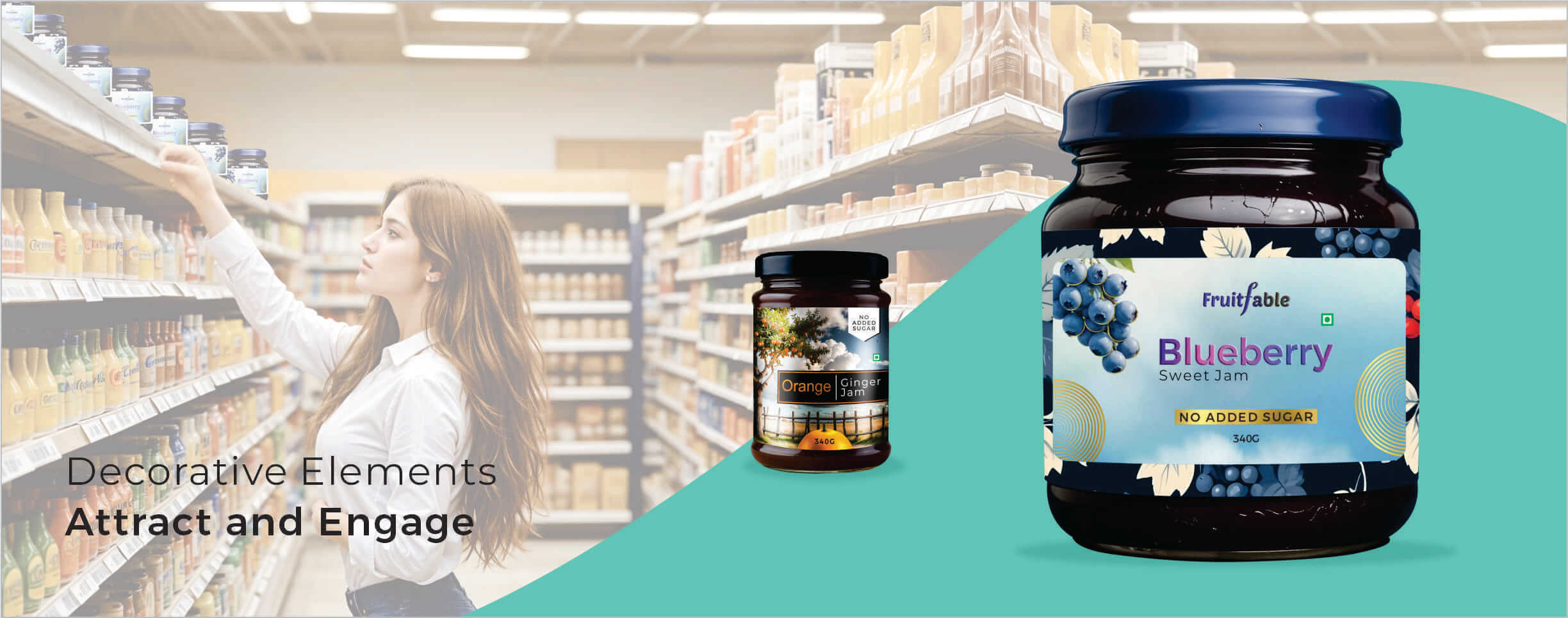 3. Decorative Elements: Attract and Engage
3. Decorative Elements: Attract and Engage
While functionality is crucial, decorative elements are what draw consumers in and create a memorable brand experience. A label’s visual appeal can significantly impact a consumer’s first impression and influence their purchasing decision. Effective decorative labels use color, imagery, and design elements to reflect the product's essence and brand identity.
Key Considerations:
-
Color Psychology: Choose colors that resonate with your target audience and convey the right emotional tone. For example, vibrant colors might work well for youthful cosmetics, while subdued, elegant tones could be more appropriate for high-end spirits.
-
Visual Appeal: Incorporate eye-catching graphics and unique design elements that differentiate your product from competitors.
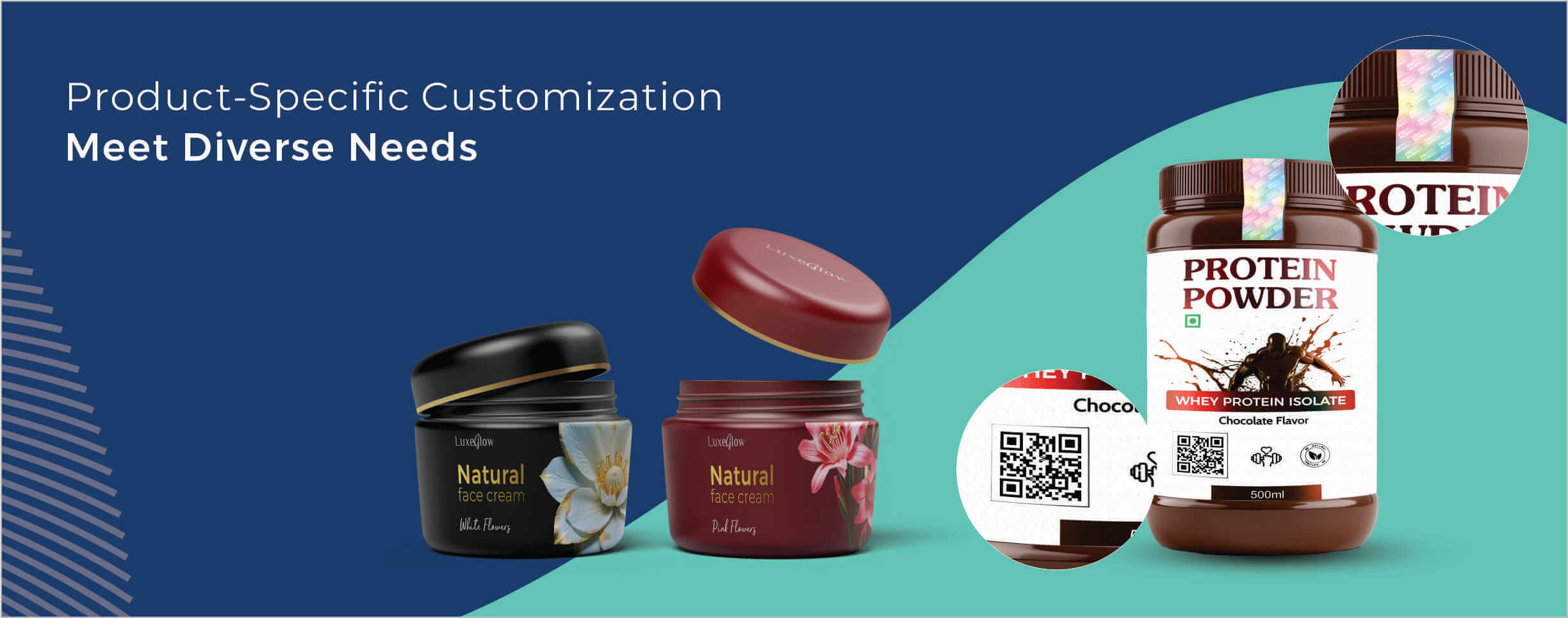 4. Product-Specific Customization: Meet Diverse Needs
4. Product-Specific Customization: Meet Diverse Needs
Different products have unique requirements, and labels should be customized to meet these needs effectively. For instance, a neutraceutical product might require labels with detailed ingredient lists and health claims, while a beverage label might focus more on brand storytelling and visual appeal.
Key Considerations:
-
Substrate Suitability: Match the label substrate to the product’s characteristics. For example, glossy finishes might be ideal for cosmetics, while matte or textured labels could suit gourmet foods.
-
Innovative Features: Consider incorporating features such as peel-off panels, QR codes, or holograms for added functionality and brand protection.
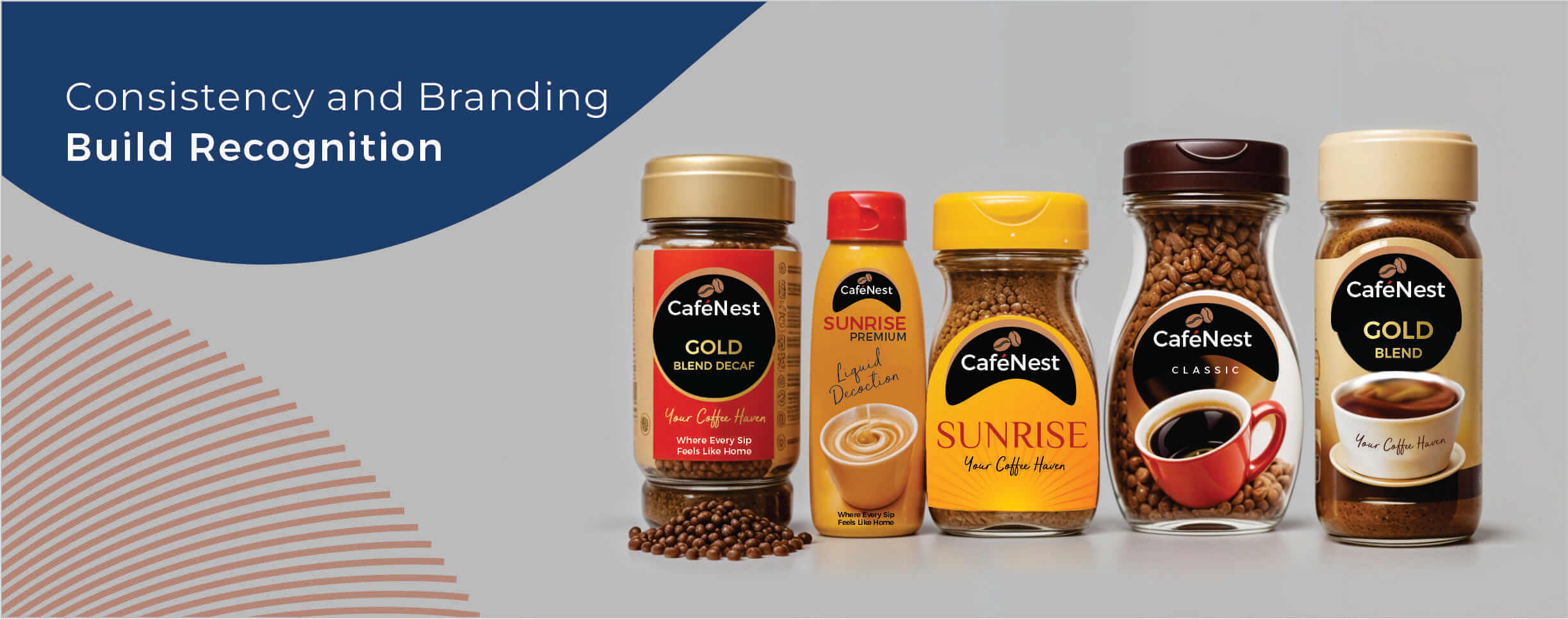 5. Consistency and Branding: Build Recognition
5. Consistency and Branding: Build Recognition
Consistency in label design helps build brand recognition and trust. Ensure that your labels align with your overall brand strategy, including colors, fonts, and logos. Consistent branding across products fosters brand loyalty and makes your product instantly recognizable to consumers.
Key Considerations:
-
Brand Elements: Integrate your brand’s visual identity into the label design to reinforce brand presence.
-
Design Cohesion: Maintain design consistency across different product lines to strengthen brand recognition.
Conclusion
In the competitive landscape of product marketing, well-crafted printed labels are a powerful tool for driving sales. By prioritizing quality, ensuring functionality, incorporating decorative elements, customizing for specific products, and maintaining brand consistency, you can create labels that not only attract attention but also enhance consumer trust and loyalty. For brand owners, project managers, and marketing heads across various industries, understanding these principles is key to developing labels that effectively boost sales and strengthen brand identity.
Whether you’re working with FMCG, beverages, neutraceuticals, pharmaceuticals, automotive, wine and spirits, or cosmetics and personal care products, investing in high-quality, thoughtfully designed printed labels will yield significant returns in terms of consumer engagement and sales performance.